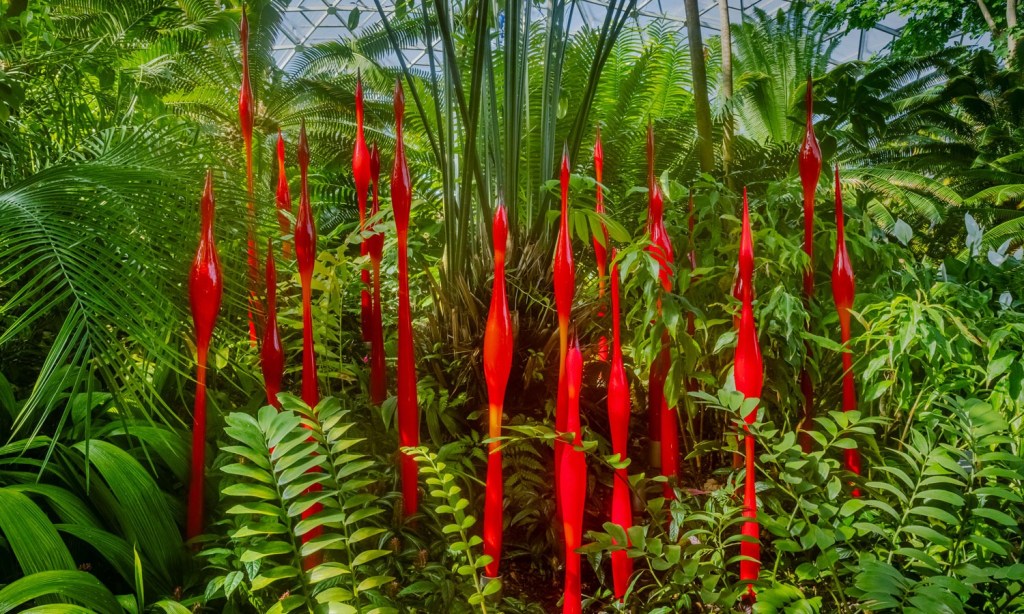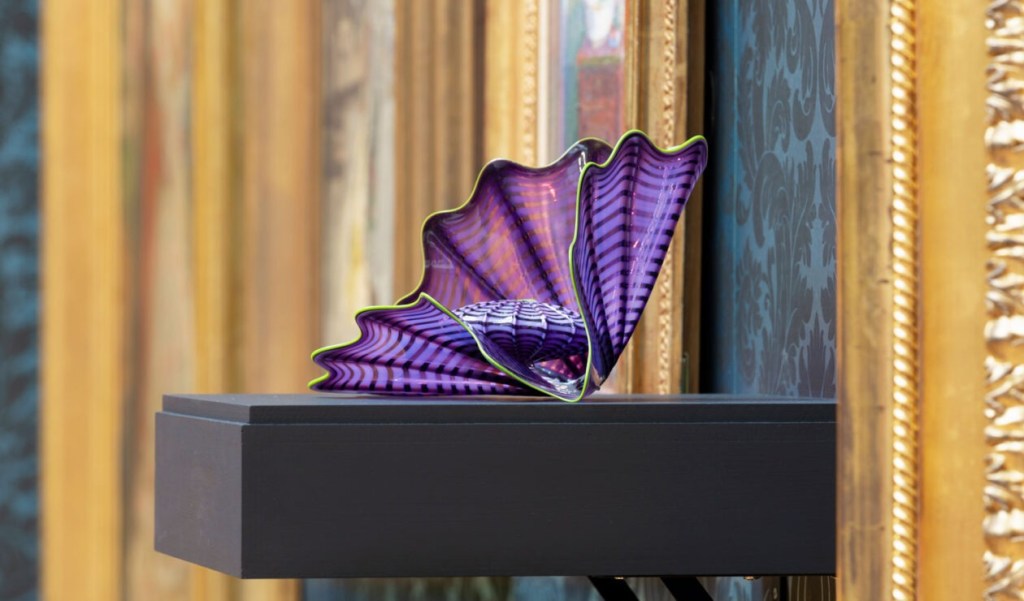Chihuly sheds colourful new light on Botanic Garden
An intensive collaboration between Adelaide Botanic Garden and artist Dale Chihuly has created a series of striking glass installations – including two brand new works – that are curated to live in rhythm with the flora and fauna around them.
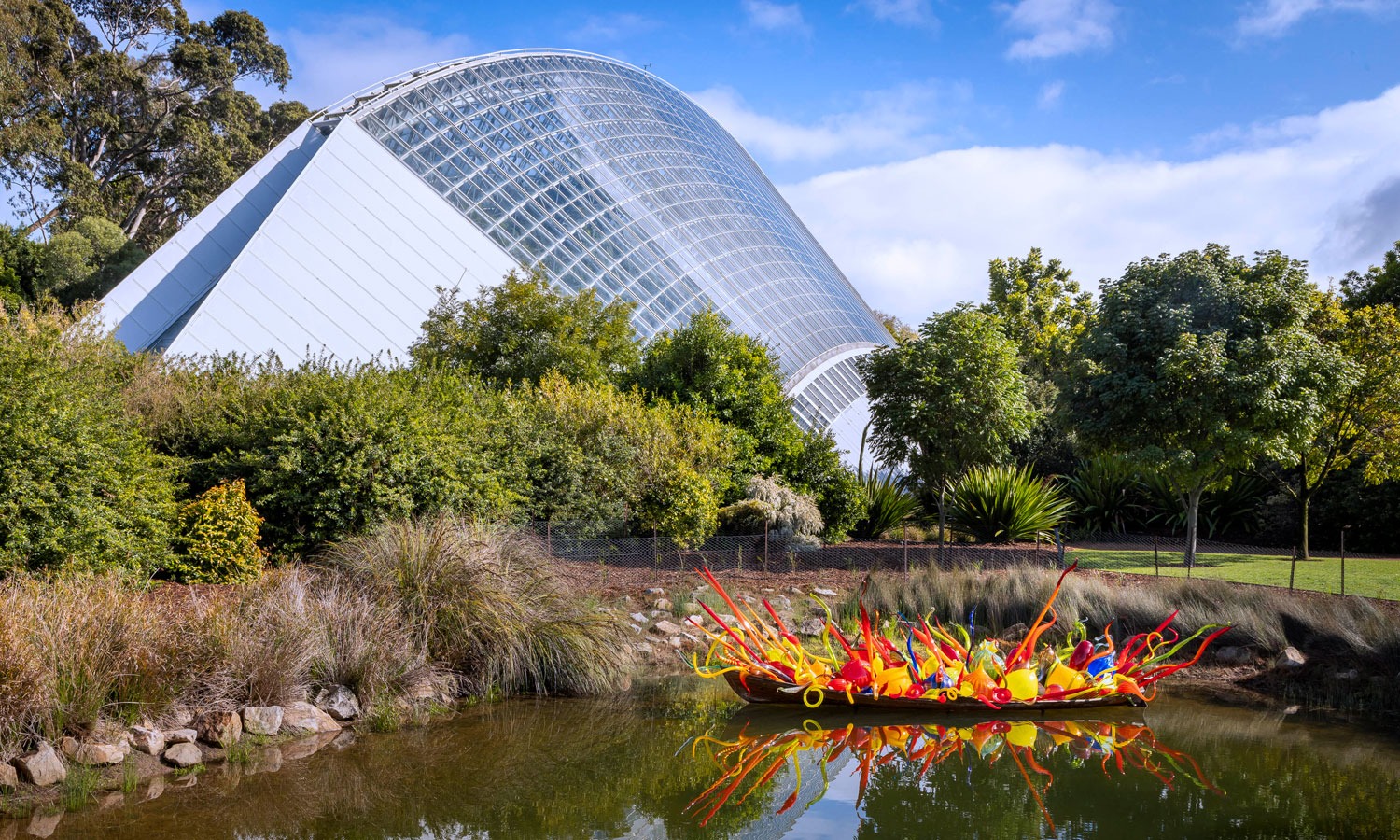
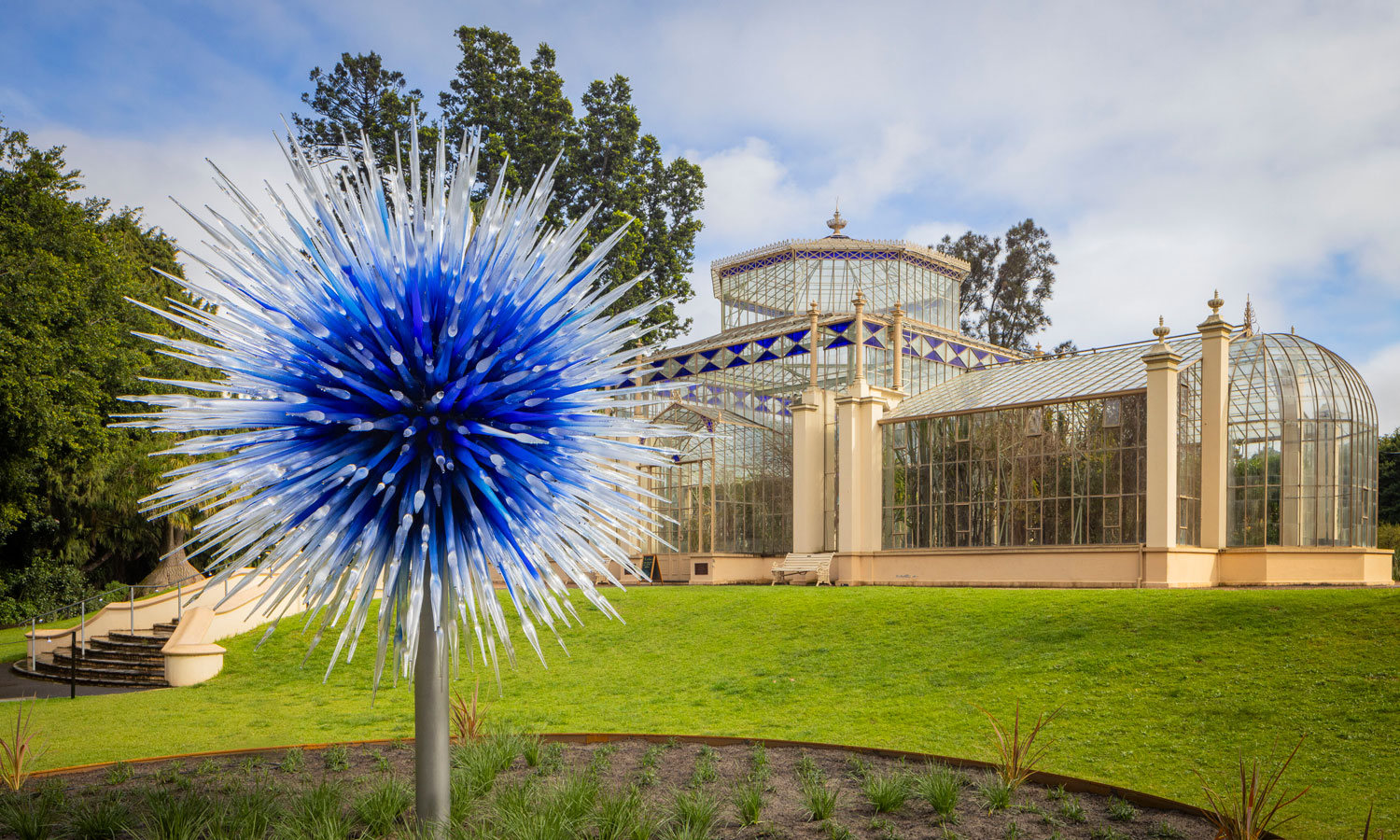
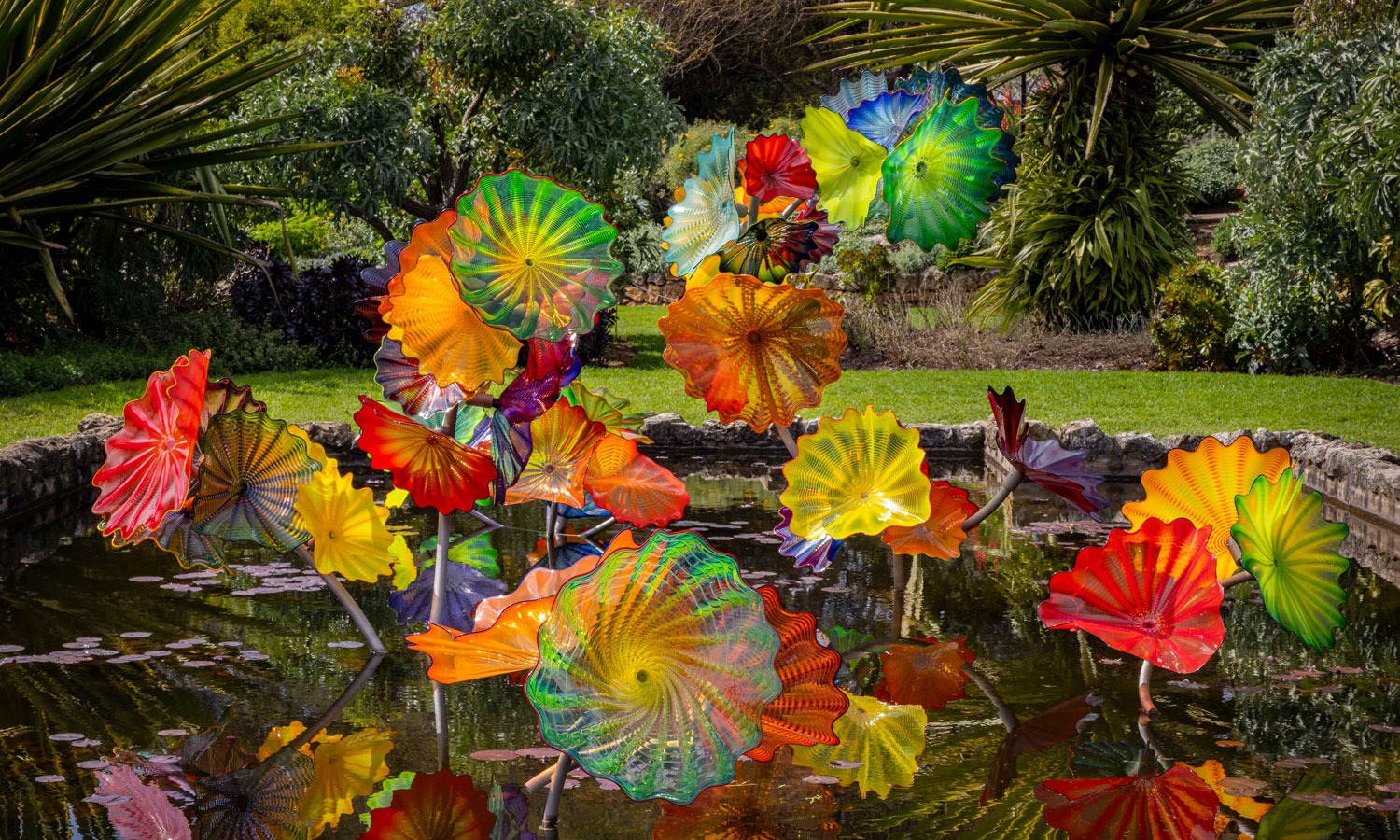
As the sun dips in the Adelaide Botanic Garden, tens of thousands of bats take flight from neighbouring Botanic Park.
Throughout the garden, against the backdrop of the winged silhouettes filling the dusky sky, fluid, colourful forms begin to glow. Fifteen large-scale works by US-based and globally-renowned artist Dale Chihuly are lit from within and without, interacting in strange and compelling ways with the now-shadowy plant life around them.
For the next seven months, this nightly pattern is set to repeat as Chihuly in the Botanic Garden transforms with the seasons. The exhibition can be viewed throughout the day or on a handful of evenings each week, and each visit will likely be a different experience as the quality of light changes, plants flower, fruit and drop their foliage, and the bats and other fauna adapt their habits to the time of year.
This element of transformation is by design.
“We had a lot of conversations with the garden team about what to expect and they shared a lot of photography with us,” says Britt Cornett, director of exhibitions for Chihuly Studio.
“But, of course you don’t know, right? It’s the natural world that’s going to do what it’s going to do even with a team of people taking good care of it. And there’s something about being here in Australia in the southern hemisphere that’s new and different, that you just can’t wait to see how it unfolds over the seven months and through the evening.”

Dale Chihuly, Blue Crystal Tower and Red Reeds on Logs, Adelaide Botanic Garden. © 2024 Chihuly Studio. Photo: Nathaniel Willson
You might like
This is the first time the works are being seen in Australia, with Adelaide becoming only the third city outside of the United States to host a Chihuly Garden Cycle exhibition.
Cornett and Chihuly’s wider team have carefully curated the art’s placement throughout the Botanic Garden – creating a winding path that is legible regardless of which garden entrance is used.
There are surprising relationships. The multitudinous reaching, red-tinged glass forms of Chihuly’s Cattails and Copper Birch Reeds present a gentle, organic challenge to the highly structured landscape of the Economic Garden. And the riotously colourful artwork-filled Fiori Boat feels almost like a mirage sitting on the water among the muted palette of the First Creek Wetland.

One of two new site-responsive works by Chihuly, Glacier Ice and Lapis Chandelier, in the Adelaide Botanic Garden Palm House. © 2024 Chihuly Studio. Photo: Nathaniel Willson
“One of the things about a project like this, it’s actually not just one team, it’s a whole bunch of little teams that are very expert at what they do working in concert,” says Botanic Gardens and State Herbarium director Michael Harvey.
“You’ve got a horticultural team who have responded to each of these works with an entirely new planting scheme, and so around the site you will see that new garden beds have been created… and they’ve tried to use native Australian plantings where possible, because we wanted it to feel like the Australian response to Chihuly.”
Alongside the collaboration and the curation, two newly created site-responsive works help make Chihuly in the Garden unique to its surroundings. The first, Glacier Ice and Lapis Chandelier, is an epic-scale piece hung from the ceiling of the Palm House. It both mimics and pushes back against the materials, forms and colours of the restored Victorian glasshouse within which it is located.
The second new work, Jet and Crimson Fiori, is showing as part of a ticketed exhibition of works in the Bicentennial Conservatory, the distinctive curved conservatory housing the Botanic Garden’s display of lowland rainforest plants.
Subscribe for updates
Jet and Crimson Fiori takes inspiration from the iconic Sturt’s desert pea.
“When we came out [for an initial site visit], we learned about Sturt’s desert pea and how important that is to the region,” says Cornett. “We took that back and shared that information along with the rest of the site information.
“Dale was in the hot shop, working with the team, doing a lot of experimental new fiori work – which is the term for flower. And he was kind of thinking about that red-black palette and thought, ‘let’s try something new’.
“There’s a new process in which the hot glass is stamped to create textures and then this combination of red and black – really, we haven’t done anything like it.
“He wasn’t sure if it was going to work and he sat with it for a while, then we mocked it up full scale in the studio and now here it is.”

Dale Chihuly, Jet and Crimson Fiori (detail), 2024, Adelaide Botanic Garden. © 2024 Chihuly Studio. Photo: by Nathaniel Willson
The Chihuly installations are accompanied by a series of public programs that range from live music to hospitality and science talks. These create another layer of the cross-pollination that Harvey says is core to the Chihuly collaboration.
“I think it gives us an opportunity to attract a new audience to the garden, who will then become, I hope, lifelong garden visitors. But it’s also a chance to bring in some of those broader stories of the garden,” he says.
“Projects such as this are a way of really exploring the aesthetic of the garden, but also the spirituality of the garden.
“You can come here for the love of the garden and experience amazing art. But there will be people who are here because of the artwork, and yet I’ve just watched as we’ve been talking – people are taking photos of the art, and then turning their back on the art and taking photos of the Madagascan collection [in the Palm House]. That’s exactly what we want to engender among the visitors – that broad interest.”
Chihuly in the Botanic Garden is open to the public from September 27, 2024, until April 29, 2025. Daytime entry is free. There are also evening showings from Thursday-Saturday (the ticketed ‘Chihuly Nights’), and the Bicentennial Conservatory is hosting an accompanying exhibition titled In Full Colour: Dale Chihuly. Various public programs accompany the installations.
Read more about Dale Chihuly and his connections to Adelaide’s glass-art community in this article by John Neylon.
